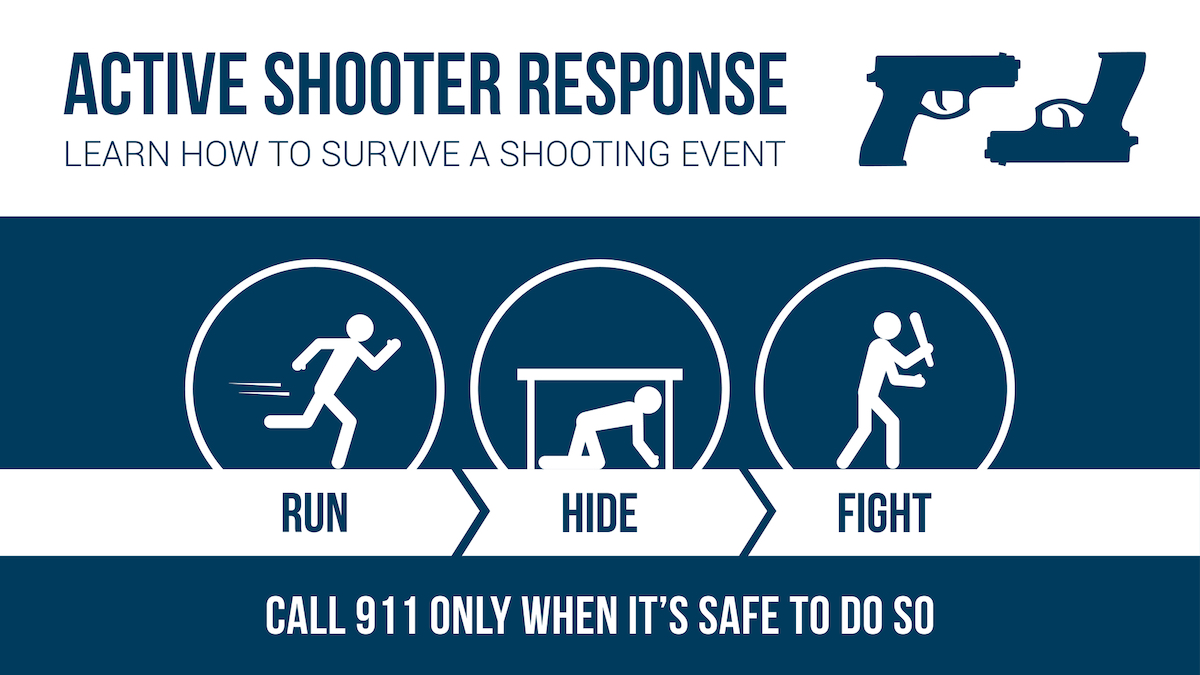
Software Maintenance Boo-Boo Triggers False Active Shooter Alerts On New England College Campus Screens
September 6, 2022 by Dave Haynes
Data integration and triggered messaging are great applications for digital signage, but their use can come with some risks – as evidenced just before the long weekend at a US college.
A false active shooter warning was sent out to the entire Amherst College campus last week, including to digital signs around the New England campus. The messaging startled students and staff during an already harried time, the day when a lot of students are moving into on-campus residences.
The booboo – midday reports of a gunman on campus – was tracked to the software company behind the school’s alert system, the college announced.
Amherst College President Michael Elliott put out a message explaining what happened …
I wanted to follow up on the message I sent last Friday regarding the inaccurate AC Alerts that were received that afternoon. I am appalled that this incident transpired, especially at a moment when we were welcoming the newest members of our community on a day when so many staff, faculty, and students had returned to campus to inaugurate our new academic year. I know the false alerts caused a great deal of confusion, fear, and anxiety in our community, and I’m deeply sorry that this occurred. Members of my senior leadership team and I have heard from many members of our community about how profoundly troubling and disturbing these events were. Please be reminded that all students, staff, and faculty have access to resources for support, as I outlined in my message last Friday.
I write now to share some further details about what occurred and steps that we are taking to address both external and internal issues raised by the incident. Please be assured that the emergency alert system is restored and fully operational and that the vendor has fixed the technical problem that led to the incorrect alerts.
A few minutes before noon, we became aware that some groups and digital signs were receiving messages from the AC Alert system, and we quickly determined that they were both inaccurate and not originating on campus. We began our investigation of the incident immediately. While we were investigating those earlier messages, the entire campus received the false active shooter notifications in the early afternoon. After confirming that these notifications were false, we sent out our messages about the system malfunction.
We now have reports from the software company that caused the technical error that resulted in the incorrect alerts being sent, as well as from the College’s Information Technology team and from our Emergency Management team.
All of those investigations confirmed that the vendor mistakenly caused a series of false notifications to be sent while doing software maintenance and testing on their systems. Unfortunately, the vendor did not realize that it was sending an alert to our campus when it was testing the software. There is currently no evidence that either of these messages was sent deliberately or was the result of outside hacking.
As important as understanding how and why the mistake occurred is deliberately and thoroughly examining our own internal processes and systems to make sure we are as prepared as possible for any other emergencies that might occur.
The good news here is that the alert system worked as intended, in terms of pushing out notices. The lesson, though, is that hooking into data and third-party systems is a handle with care situation, and that mundane things like software upgrades can have unintended, unexpected consequences.



Leave a comment